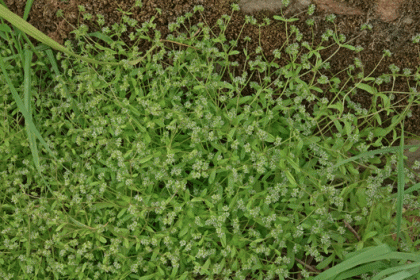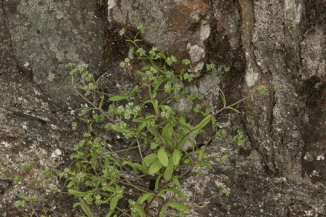If ever there was a flower that cried out to be seen through a hand lens, this is it. Each one is really tiny – only 1-2mm across – and is funnel-shaped with five pale lilac lobes, 3 stamens and one style with 3 stigmas. The flowers are borne in large crowded terminal clusters on stems which branch repeatedly. Overall this is quite an untidy, busy, straggly plant and it has bright green, spoon-shaped leaves, their bases connecting to one another at each fork on the stems. The squarish stems are finely ridged and at the base of the plant is a rosette of leaves. The plants grow to about 40cm tall, growing in cracks of pavements, at the base of old walls, in gardens, dunes, sandy grassland and generally on soil that is poor in nutrients. It is by examining the fruit closely that identification can be made for this species as Keeled-fruited Cornsalad is also widespread. The fruit in Common Cornsalad (1.5-2.5mm long) is hairless and has a shallow groove on its flat outer face. In Keeled-fruited Cornsalad, the fruit is longer (2-2.7mm) and the groove is quite deep. This is a native wildflower species which flowers from April to June, is more commonly found in eastern and southern coastal counties and it belongs to the Valerian or Valerianaceae family.
I first spotted this species growing on the old bridge over the Slaney at Scarawalsh, north of Enniscorthy in County Wexford when I also photographed it.
If you are satisfied you have correctly identified this plant, please submit your sighting to the National Biodiversity Data Centre




